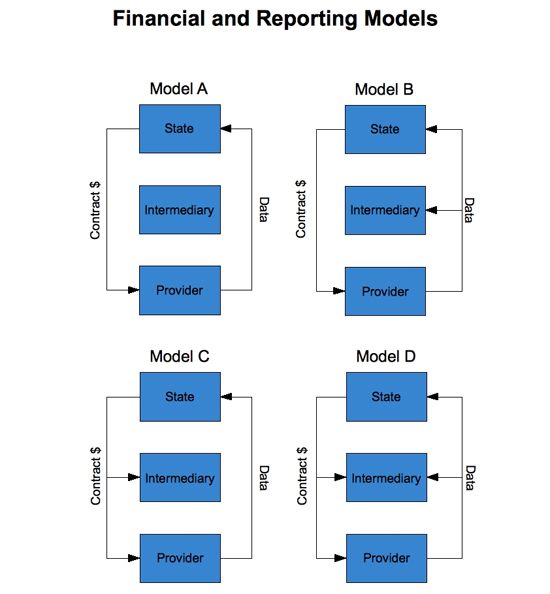Financing and Reporting Models
The STAR-SI initiative has demonstrated how the structure of the state payment and data reporting systems can influence the development of a PIPM system. We have identified four models to date. The presence and role of a fiscal intermediary such as a county or managed care organization presents a key differentiating factor.

Download a PDF version of the Financial and Reporting Models ![]() .
.
Each model represents a different relationship between the state, intermediary, and provider related to payment and data submissions. Your approach to performance management may be different, based on the existing funding and data reporting model in your state. Scenarios where data flows through an intermediary before submission to the SSA may be particularly challenging. States must leverage the contracting/payer role to stress the importance of data in policy decisions and to ensure the timely flow of data within the system.
Four Financing and Reporting Models
- Model A. Funds flow directly from the state to the provider, while data flows directly from the provider to the state.
- Model B. Funds flow directly from the state to the provider while data flows to a fiscal intermediary and then to the state.
- Model C. Funds flow from the state to the fiscal intermediary and then to the provider, but data flows directly from the provider to the state.
- Model D. Funds flow from the state to a fiscal intermediary and then provider while data flows from the provider to the fiscal intermediary and then to the state.



